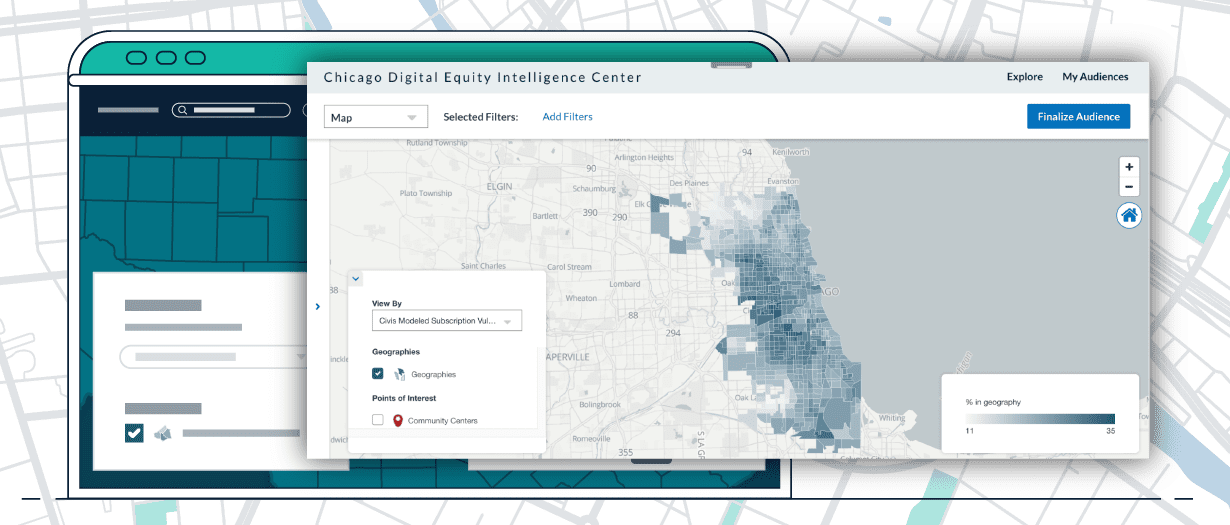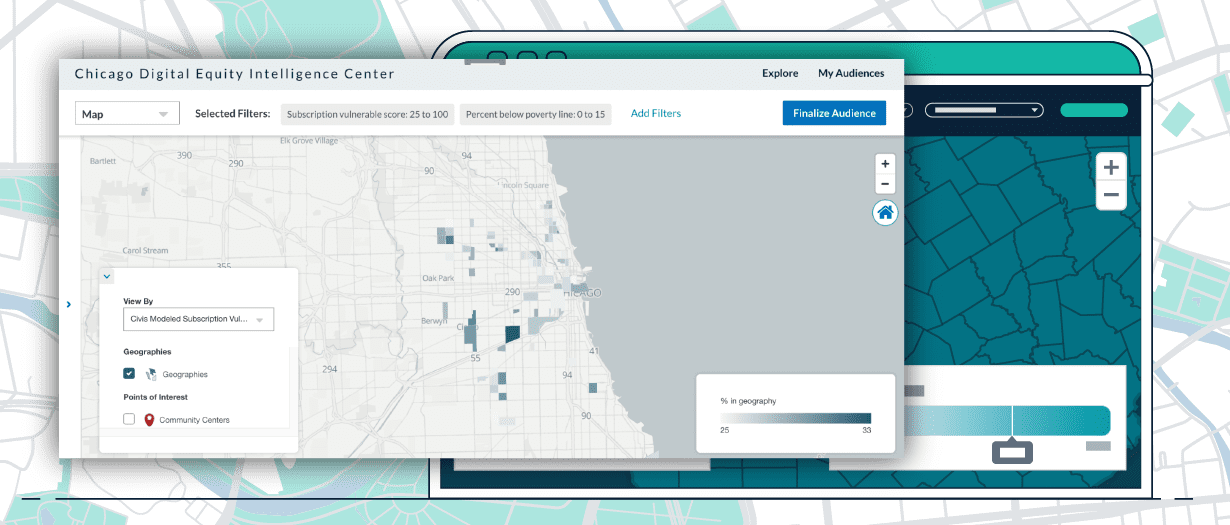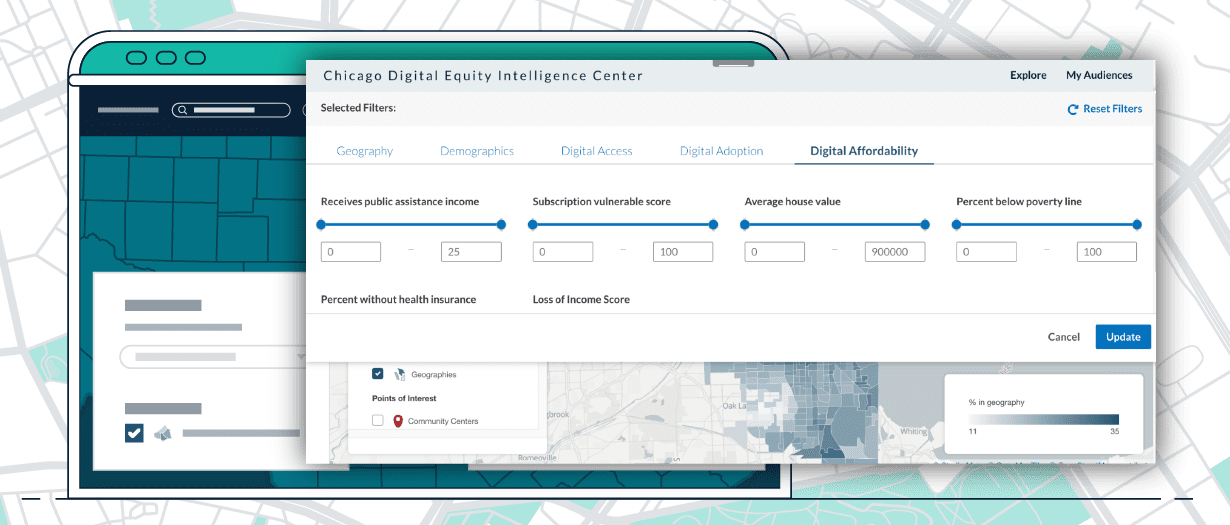President Biden’s Infrastructure Investment and Jobs Act, passed in Nov. 2021, commits $65 billion to connecting America — to expanding dependable high-speed internet access to all corners of the U.S.,…
The digital divide — the schism separating citizens with efficient access to modern information and communications technologies from those without — continues to disrupt the lives of millions of Americans across all corners of the nation… including some corners you might not expect.

Take Chicago, for example. Chicago is famously a city of neighborhoods — a patchwork of communities encompassing urban, suburban, and rural areas. One way that a hypothetical program might try to bridge the digital divide across these areas would be to prioritize high-speed internet in census tracts where at least one in four residents are below the poverty line. Of the approximately 3 million people who live in the city, about 680,000 live in such areas — a useful step for identifying high-priority neighborhoods based on public data. But it still misses critical factors for addressing the challenges of digital access and equity, because income alone does not tell the complete story.
Focusing exclusively on income misses citizens on the margins — families earning enough to live above the poverty line, while still making daily and monthly tradeoffs between paying for rent, gas, or food and paying for a high-speed connectivity. In fact, looking at only the census tracts identified in this basic approach shows about 300,000 Chicagoans living in places where, despite lower rates of poverty, residents demonstrate a higher vulnerability to paying for high-speed internet — census tracts including marquee neighborhoods like Wrigleyville, home to Major League Baseball’s Chicago Cubs.

Although President Biden’s $1.2 trillion Infrastructure Investment and Jobs Act (IIJA) promises to narrow the digital divide, committing $65 billion to expanding broadband availability and 5G wireless connectivity across the U.S., state and local governments applying for IIJA funding are still struggling to identify which constituents need the most immediate assistance. Looking at the available data, there isn’t a clear answer.
Governments, nonprofits, and other stakeholders cannot rely solely on traditional metrics like income or existing estimates on connectivity to fully understand and address broadband needs within their communities. Officials require data that is consistently evaluated and vetted — in short, data that delivers metrics specific to solving digital access challenges.
Previous posts in this blog series have addressed some of the availability, access, and affordability challenges facing communities not yet served by high-speed internet service. But roughly a year after President Biden signed the IIJA into law, many of the most important questions about aiding these communities remain unanswered, including:
The problem is the data that can answer these questions lies scattered and siloed across multiple sources: American Community Survey (ACS) data lives within the U.S. Census Bureau, FCC data lives somewhere else, and a host of other disparate, disconnected data sources contain their own valuable insights. This fragmentation problem must be resolved — i.e., the data must be combined in a more useful, holistic, and consistent way — in order to avoid an inequitable distribution of IIJA funds and resources.
Civis can help.

Civis’s cloud-based Digital Equity Intelligence Center (DEIC) features a comprehensive suite of data and interactive tools enabling a precise understanding of broadband affordability, access, and adoption issues across communities. Civis also employs a national tracking survey asking American adults vital questions relating to their digital usage and understanding.
Civis then combines all these relevant data sources — clients’ existing data, publicly available geographic data, and Civis-modeled data — within the DEIC alongside an interactive map-based application, allowing teams to skip the back-end data work and get straight to identifying key audiences for outreach.
Data analytics and models created by Civis’s data scientists are surfaced in an easy-to-use interface, so any team member can use the DEIC to understand populations of interest and then create custom lists for campaign activation. These models can help communities identify areas of need that have traditionally been left out of digital equity planning programs.
The digital divide is not a straightforward problem. Communities need robust solutions that reveal more of the whole picture, rather than slicing up communities one metric at a time. And with a more precise understanding of who is in need and where to reach them, government teams can proactively connect critical internet services with the people they’re intended for, erasing the digital divide once and for all.